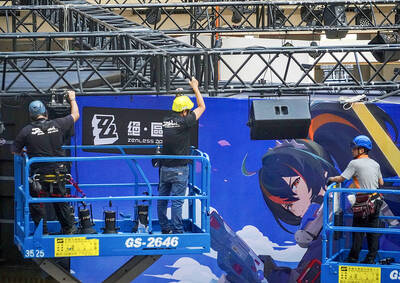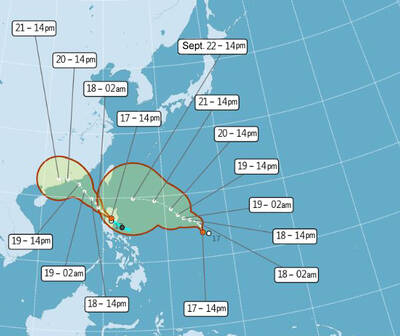"Made in India" could be the next big economic story, with the country challenging China's position as the leading global manufacturing hub within five years, a new report said.
Right now China is the favorite choice for outsourcing manufacturing while India is preferred for information technology, finance and customer services, said Capgemini, Europe's largest computer consultancy.
But "there's a very keen interest in moving more manufacturing to India," said Roy Lenders, vice president at Capgemini Consulting Services and the report's author.
"India could challenge the position of China as the manufacturing center of the world in the next three to five years," Lenders said, citing a survey of 340 mainly Fortune 500 global manufacturing companies.
"What surprised us was when we asked about their plans for the next three or four years, they said outsourcing manufacturing [to India] was a higher priority than outsourcing back office work," he said in a telephone interview.
"If we look at the respondents' plans for the coming years, manufacturing will become the number one activity to be off-shored to India," Lenders said, with lower costs the key factor driving the trend.
Manufacturing outsourcing looks set over coming years to surpass India's flagship IT and business process outsourcing activities in importance, he said.
Right now, China's share of the world's manufacturing exports is more than 8 percent while India stands at just under 1 percent.
But "the interest of global manufacturers in manufacturing in India is very high compared to China. In terms of trend there will definitely be a move. China has a reason to be worried," Lenders said.
However, India must improve its infrastructure with nearly half of the firms surveyed that had already outsourced manufacturing to India complaining about a lack of manufacturing and supply chain infrastructure.
India's ramshackle infrastructure of potholed roads, dilapidated ports, shabby airports and erratic power is regularly cited as an obstacle to economic growth along with the maze of red tape.
It has already taken some steps to promote an export-led manufacturing boom by setting up special economic zones -- havens of economic freedom that drove China's industrialization.
The lead factor driving India's new manufacturing popularity is price, he said. Some of the main manufacturing sites in China are becoming too pricey.
Chinese manufacturing wages are US$250 to US$350 a month whereas they average US$100 to US$200 per month or lower in Thailand and other parts of Asia. In India factory jobs start at US$60 a month.
All the international players "are looking at India as the new sourcing hub," said association vice-president J.C. Chopra. Others setting up manufacturing facilities in India include Finnish telecom leader Nokia, South Korean steel heavyweight Posco and US computer giant Dell.
And the companies do not only have their eyes on foreign markets. India's huge domestic market of 1.1 billion people is also a draw along with its push to boost infrastructure.
"India is building like hell, improving its infrastructure, so a lot of suppliers would like to be there," Lenders said.

Taiwan is projected to lose a working-age population of about 6.67 million people in two waves of retirement in the coming years, as the nation confronts accelerating demographic decline and a shortage of younger workers to take their place, the Ministry of the Interior said. Taiwan experienced its largest baby boom between 1958 and 1966, when the population grew by 3.78 million, followed by a second surge of 2.89 million between 1976 and 1982, ministry data showed. In 2023, the first of those baby boom generations — those born in the late 1950s and early 1960s — began to enter retirement, triggering

One of two tropical depressions that formed off Taiwan yesterday morning could turn into a moderate typhoon by the weekend, the Central Weather Administration (CWA) said yesterday. Tropical Depression No. 21 formed at 8am about 1,850km off the southeast coast, CWA forecaster Lee Meng-hsuan (李孟軒) said. The weather system is expected to move northwest as it builds momentum, possibly intensifying this weekend into a typhoon, which would be called Mitag, Lee said. The radius of the storm is expected to reach almost 200km, she said. It is forecast to approach the southeast of Taiwan on Monday next week and pass through the Bashi Channel

NO CHANGE: The TRA makes clear that the US does not consider the status of Taiwan to have been determined by WWII-era documents, a former AIT deputy director said The American Institute in Taiwan’s (AIT) comments that World War-II era documents do not determine Taiwan’s political status accurately conveyed the US’ stance, the US Department of State said. An AIT spokesperson on Saturday said that a Chinese official mischaracterized World War II-era documents as stating that Taiwan was ceded to the China. The remarks from the US’ de facto embassy in Taiwan drew criticism from the Ma Ying-jeou Foundation, whose director said the comments put Taiwan in danger. The Chinese-language United Daily News yesterday reported that a US State Department spokesperson confirmed the AIT’s position. They added that the US would continue to

The number of Chinese spouses applying for dependent residency as well as long-term residency in Taiwan has decreased, the Mainland Affairs Council said yesterday, adding that the reduction of Chinese spouses staying or living in Taiwan is only one facet reflecting the general decrease in the number of people willing to get married in Taiwan. The number of Chinese spouses applying for dependent residency last year was 7,123, down by 2,931, or 29.15 percent, from the previous year. The same census showed that the number of Chinese spouses applying for long-term residency and receiving approval last year stood at 2,973, down 1,520,